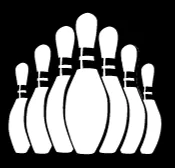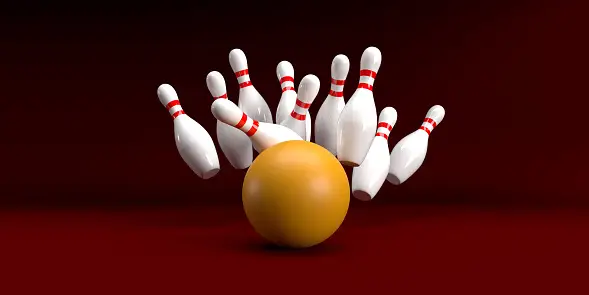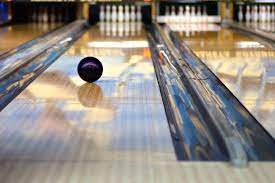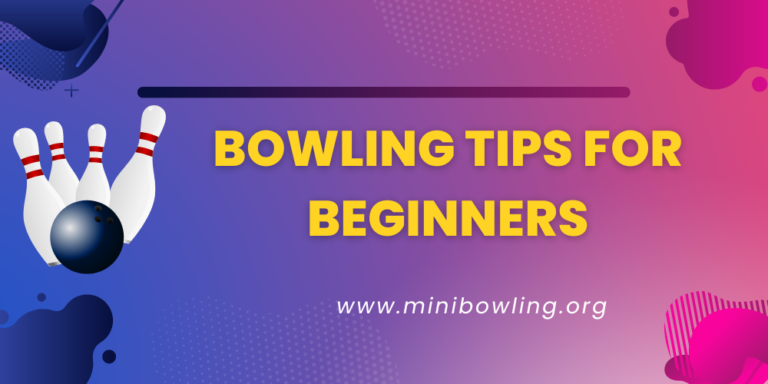Beginner Bowling Tips | Explanation
Beginner bowling tips appear easy when the pros effortlessly roll strikes, but for first-timers sending the ball straight down the lane can prove surprisingly tricky. Mastering bowling requires learning techniques and skills to consistently aim those pins.
If you feel lost about where to start as a beginner, this bowling guide will help you get off on the right foot. Read on for essential tips on choosing the right ball, understanding scoring, nailing down the basics, using good posture and approach, gaining accuracy, fixing common mistakes, and more. With some dedicated practice at your local bowling alley, you’ll be bowling like a seasoned veteran in no time.

Choosing the Right Bowling Ball
Walking up to the ball rack for the first time presents a dizzying array of sizes, weights, colors, and holes. So how do you pick one that fits? As a beginner, start by following these key guidelines:
A properly fitted ball feels comfortable to lift and won’t get stuck on your fingers during the swing. Having your custom ball drilled for your hand provides better grip, consistency, and accuracy once you get more serious. Down the road, own multiple balls like heavier ones for straight shots versus hook balls that curve more. But start basic if you’re just beginning.
Understanding Bowling Scoring
Learning how frames, strikes and spares translate into scores takes a little effort for newcomers. In ten-pin bowling, the goal stays straightforward – knock down all 10 pins with as few rolls per frame as possible. Here’s how it works:
So focus first on making good shots not big scores. Consistently picking up spares, reducing splits and increasing strikes set you on the path toward bowling proficiency and higher scores.
Mastering Basic Bowling Skills
Guiding a heavy sphere speeding down an oiled lane to crash satisfyingly into pins calls on physical skills not used too often off the bowling lanes. Here are some key techniques to hone that will have you delivering straight, accurate balls:
Remember bowling stands as much art as sport. Find the right mix of athletic motion, consistency, and finesse over pure strength. Expect your skills and scores to noticeably improve after about 6-8 sessions practicing proper basics.
Using Proper Stance and Approach
Stance and footwork establish a strong foundation for every good bowling delivery. Even before hefting the ball, attention to positioning your feet and balance ensures you can swing smoothly while directing the ball with accuracy. Follow these expert recommendations:
Stance
Stand with the lead foot near the center dot, hips open facing the pins. Dominant hand faces ball return, knees slightly bent.
Footwork
Use a 4-step approach starting with baby steps into a long final slide step landing left foot past the foul line if right-handed.
Balance
Distribute weight evenly once stopped in the finish position. No leaning, ALWAYS stay behind the foul line before the ball is released.
Remember keeping continuous forward motion until releasing the ball makes timing much easier rather than pausing mid-approach. Let gravity pull the pendulum swing once fully in motion. Smooth, spare steps prevent straining muscles leading to consistent bowling success.
Gaining Accuracy Through Targeting and Adjustments
Even after learning basic skills, most beginners struggle with controlling ball speed, revolutions, direction, and impact on the pins. Accuracy develops gradually with the help from these targeting tactics used by pros:
Remember planking practice without a ball can ingrain proper finish positions leading to better sliding technique. Analyze movements but don’t overthink every step once actually bowling.
Fixing Common Mistakes Beginners Make
Even veteran league bowlers still struggle to master consistently good technique. When just starting, avoiding or correcting these common rookie errors will speed expertise:
- Rushing the approach
- Gripping ball palm down with fingers under it
- Taking eyes off the pins during release
- Overarching backswing out and away from the body
- Muscling through the swing
- Not following fully through ending past the foul line
- Releasing late with twisted wrist
Patience combined with regular, focused practice minimizes bad habits. If struggling, ask any seasoned bowler for tips or take a lesson from a coach. Proper basics make bowling much more enjoyable.
Helpful Accessories and Gear
Aside from obviously needing bowling balls and shoes, certain aids and accessories can enhance performance, safety, and convenience when hitting the lanes:
Start With Straightforward Fun
More than anything, avoid overcomplicating things early on. Hook techniques and fancy maneuvers come only after nailing down strong fundamentals. Work on hitting the same target zones through proper timing of just four or five steps at first. Simple, spare steps are all most bowlers use for excellent execution.
League play and tournaments amp up competitive nerves that may tighten technique. Have fun practicing the basics in more casual open bowling sessions first. Children hardly old enough to lift a ball can play with bumper lanes and lighter equipment. So whether you dream of bowling glory or just some easy fun getaways with friends, stick to simple and keep score second. With the right mindset, progress will happen naturally






